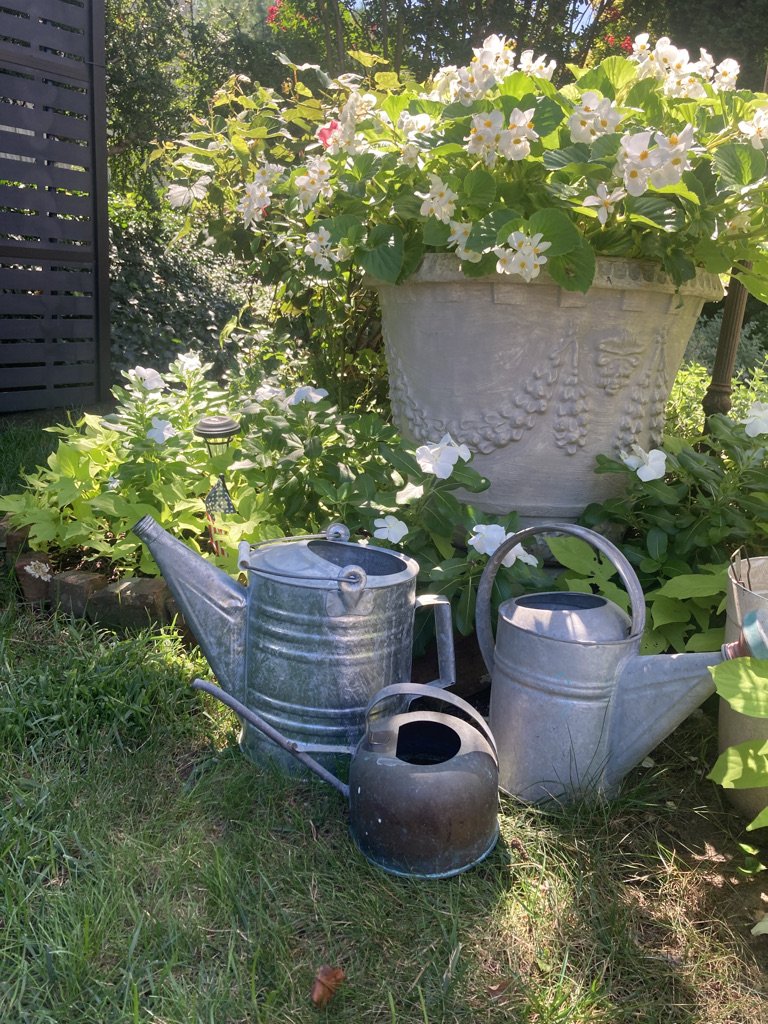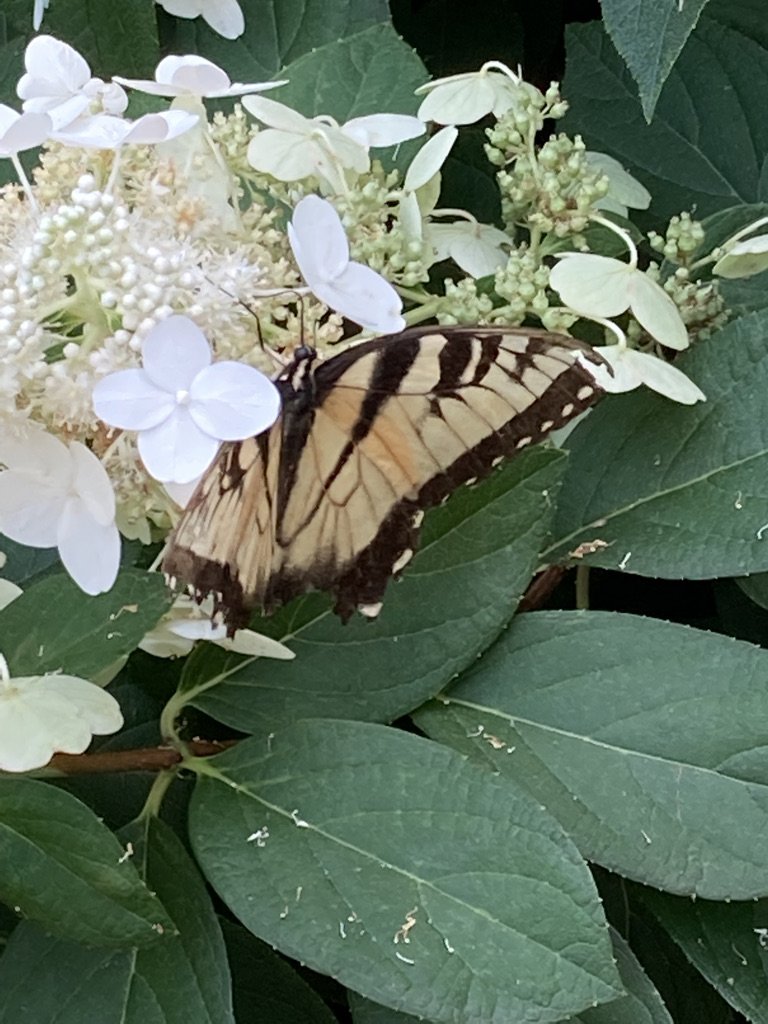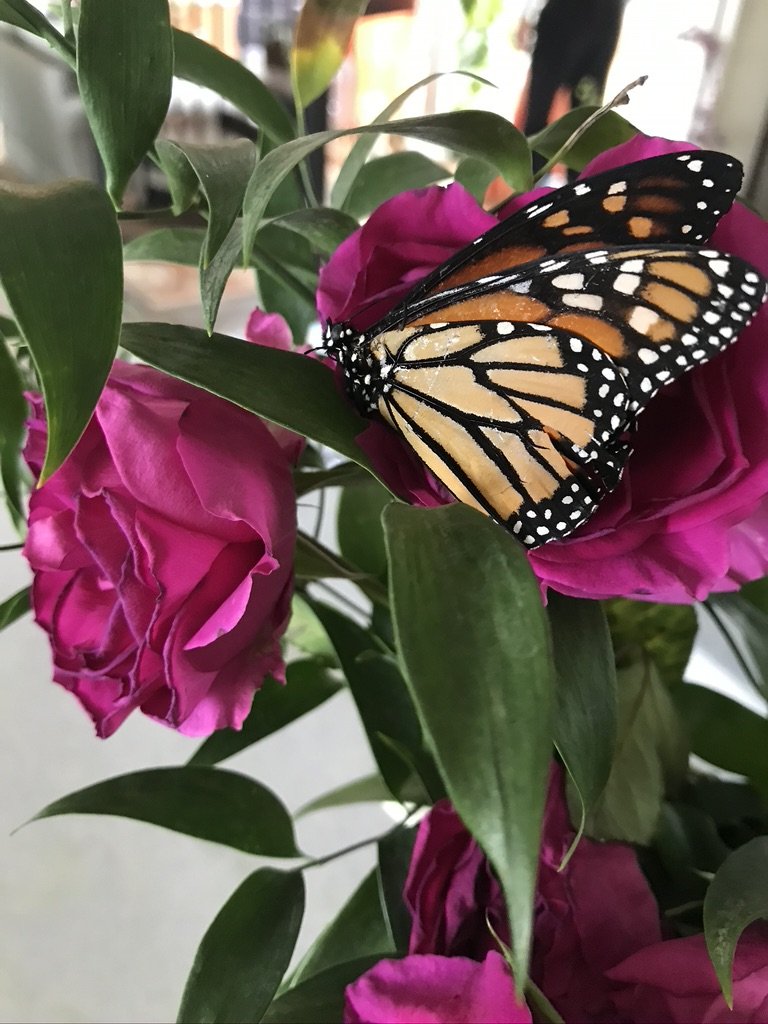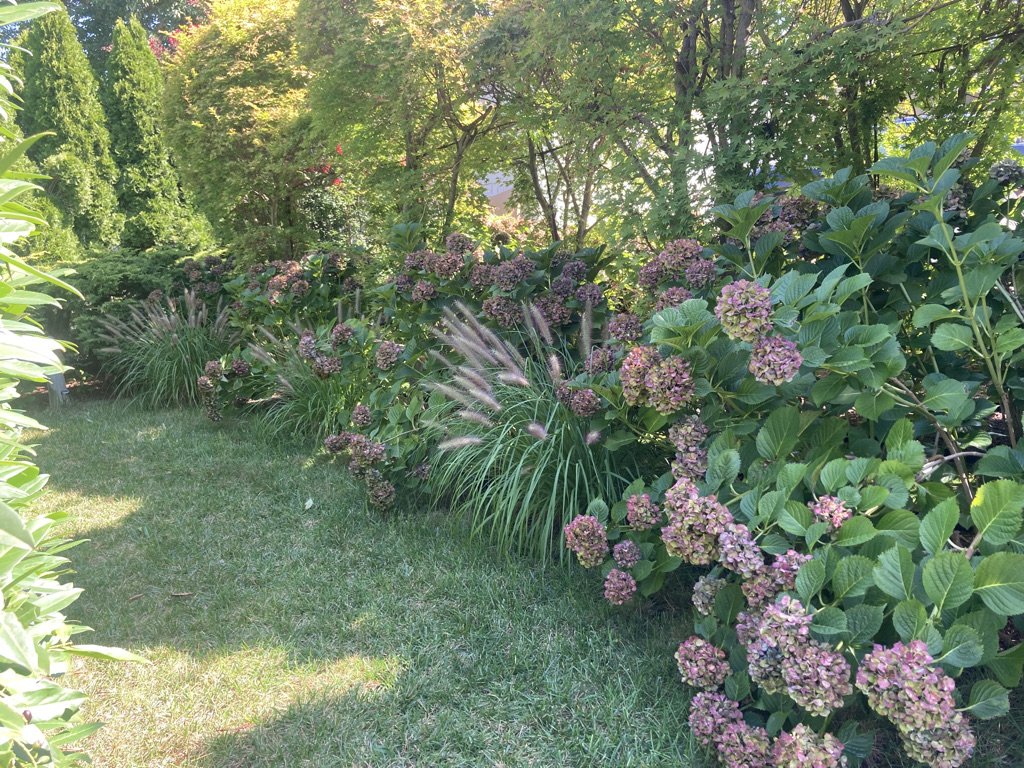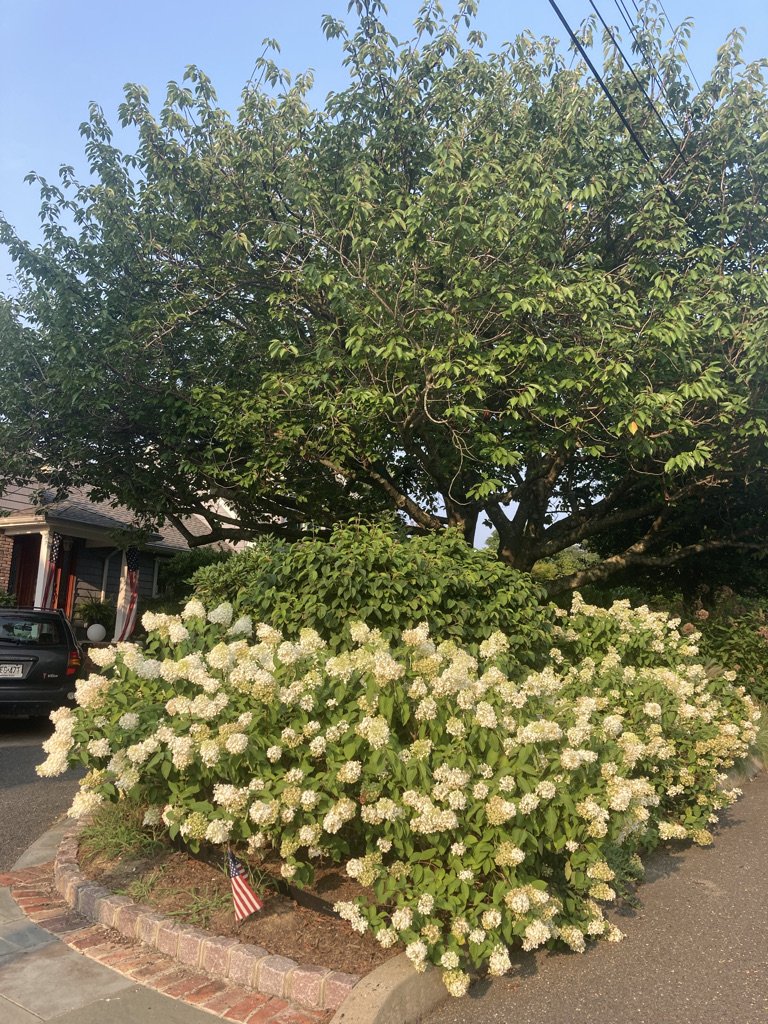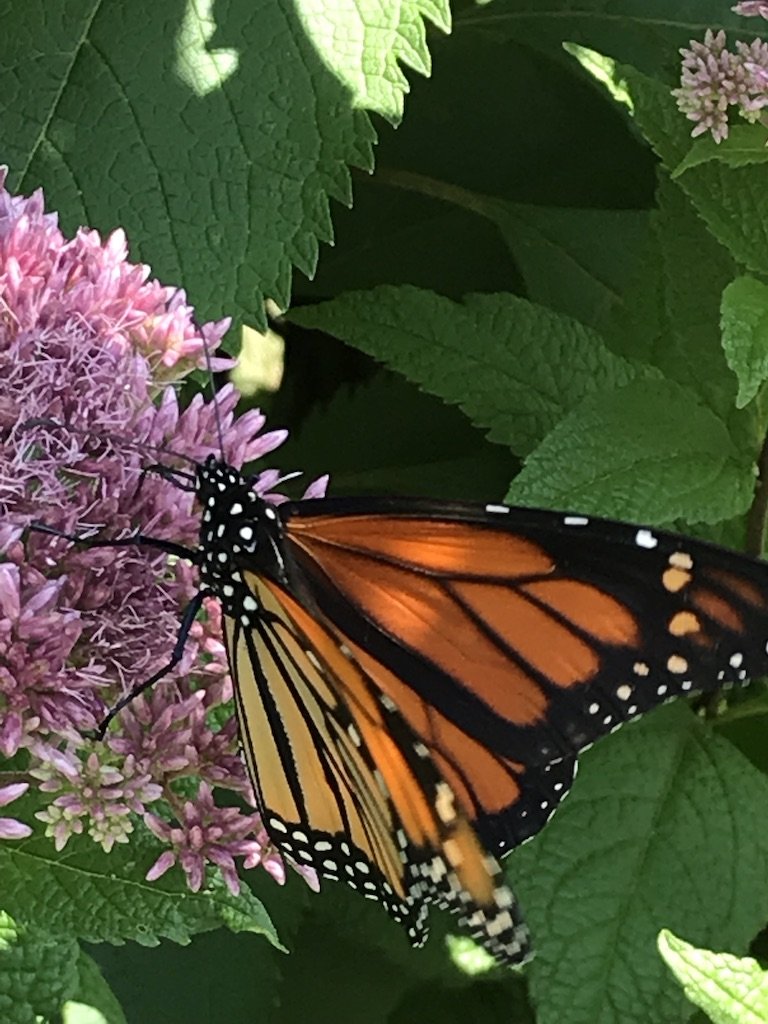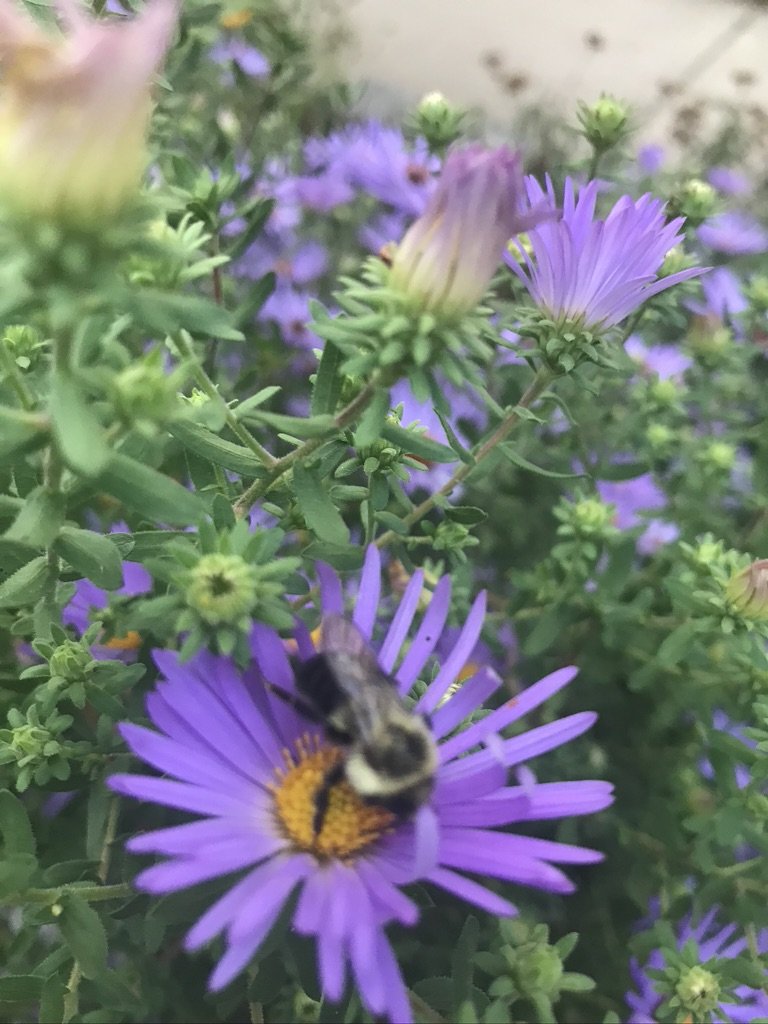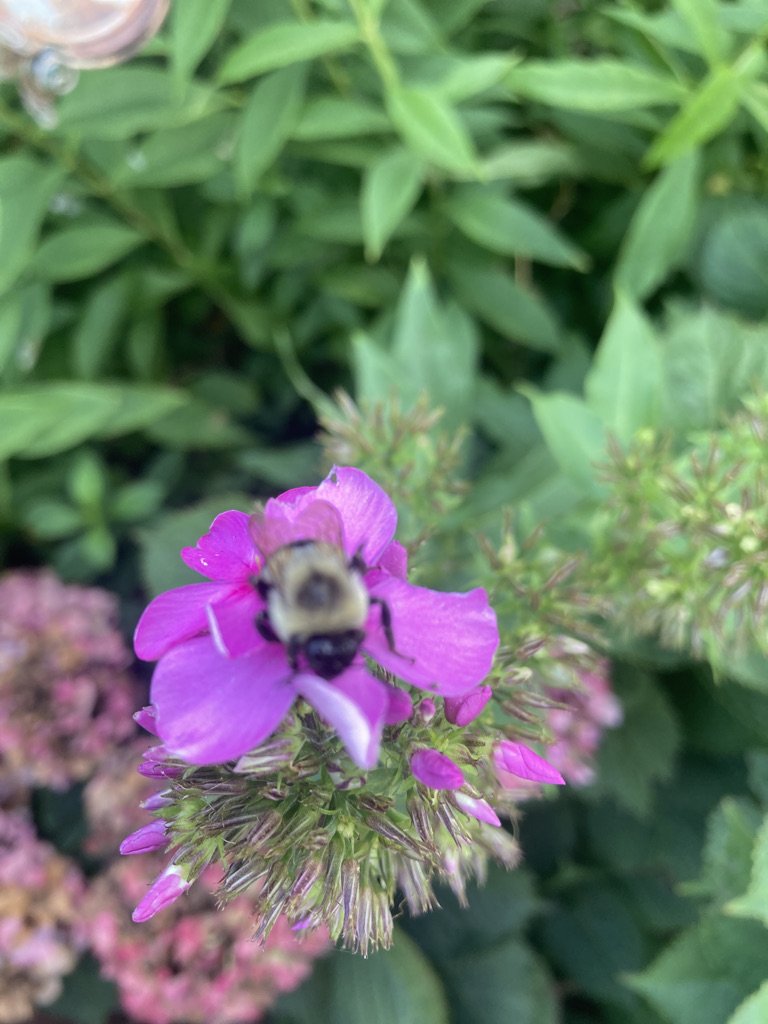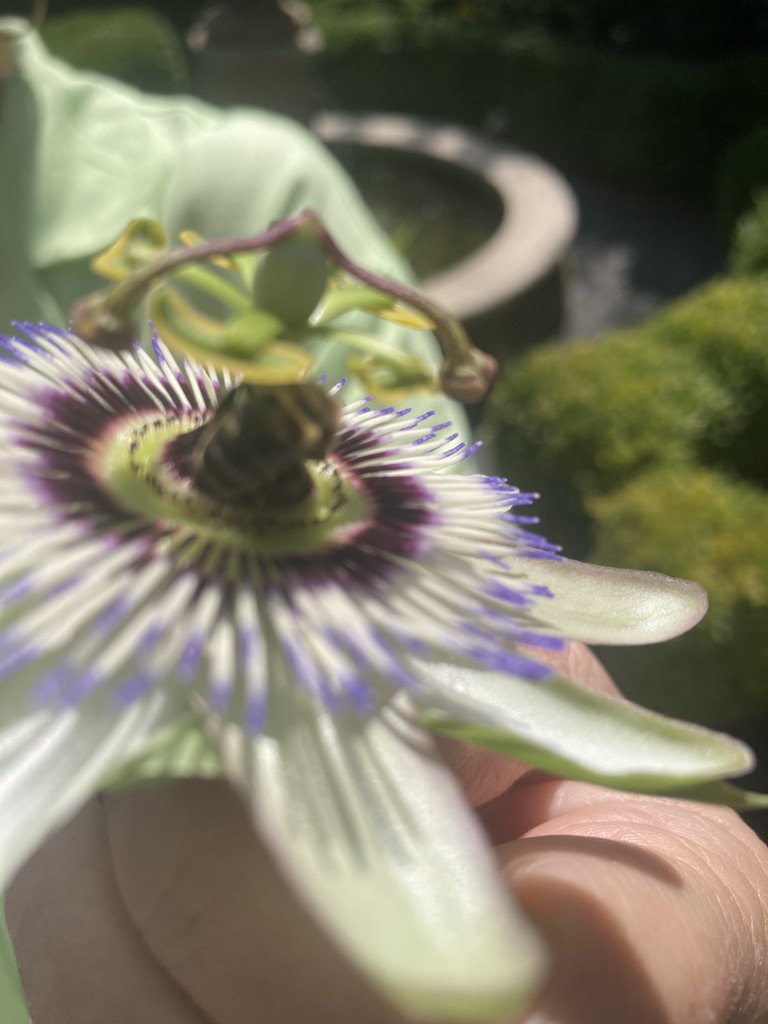How To Do Slow Gardening
It’s the dog-days of summer. And that means, taking it slow in the garden right about now.
You’ve made it through the “Silly Season” ~ aka, Spring, when you’re so busy prepping the beds (and lawn), planting, pruning, and understandably, you’re almost too pooped to get a hold on yourself.
Soon enough, you shake yourself back to life only to discover it’s August, meandering like a fashion model on the runway, towards the end of summer.
Now is when your garden gives back to you in all its bounty.
But it’s Living Art and still needs you. How to do Slow Gardening…
All things considered, this summer has been delightful ~ we’ve really only suffered through a week or so of a parched heat wave and another of rains and wind from tropical storm Ernesto.
Otherwise, we’ve been blessed with low humidity and sunny weather.
The plants are loving it.
Give back that garden love.
Slow Gardening Tips for August:
Take your morning ~ or evening ~ walks to take measure of what needs attention. Keep a journal. Write down or use your smart phone’s audio notes.
Keep Weeding
I keep some sense of sanity by taking on one “Garden Room” at a time.
Weed out any interlopers and scragglies.
Let your good plants breathe.
It’s not just a visual distraction, but the weeds rob your pretty plants of nutrients and light.
I also fluff up the mulch that invariably has hardened. Aerate it. And also make sure that you pull away any mulch that’s gotten too close to the base or trunk of the plants or tree.
Continue to harvest your edibles, including tomatoes, peppers, eggplants, and more. Also, the leaves of your Agastache for tea, your fuschia and begonias for cocktail and food garnishes. And don’t forget your Herbs: Rosemary and Thyme.
I cut them fresh ~ morning is the best time ~ and either use them straight away that day, or dry them for use later. You can also freeze them in ice cube trays for super-delicious, herbal cocktails and mocktails. You can harvest basil enough ~ so keep pinching back those blossoms and eat them ~ and make your pesto and use in salads and drinks and more…
Water your container plantings ~ preferably using the rain barrel you put in early spring 😀
Water the roots, not the leaves.
If you do need to water the garden beds, do so in the morning or late afternoon. Twenty minutes; using a soaker hose. You want to water deeply and conserve the precious water resource. Please, please, if you do have an irrigation system, don’t allow it to run for hours cycling through the zones that are mainly set up for lawns, as some of my garden clients did. You can request the service to be environmentally better, and be a good steward of your budget (!).
And you can also regulate most systems yourself directly from your smartphone.
Hydrangeas (from the Greek “hydra”) need water the most in order to keep them looking summer seductive.
Pruning is not such a big deal this time of year ~ just be aware of damaged or diseased limbs or branches that a storm or critter has made.
And some plants will rebloom if you cut them back, including Nepeta and Kniphofia, and Lavender.
I trust that you’ve already cut back your deciduous peonies (that heavy white is powdery mildew) If not, cut out/cut back now.
Fall Planting
If you haven’t done so already, you need to get your spring bulb orders in fast. For those gorgeous spring compositions, the time to plant starts around October-ish through November. It’s difficult to pin a calendar date to fall planting, given the vagaries of climate chaos, but when the nighttime soil temps are cool enough ~ 40- 60 degrees is best. You want to get the bulbs and rhizomes in before freezing, obviously, and yet while you can still work the soil. I plant with cayenne pepper to help deter critters.
Have fun perusing the bulb catalogs. Just don’t get carried away. It’s one thing to buy too many sweaters or shoes, but when those bulbs come, you gotta’ plant them! They are alive.
While I love mums and I pick up the discarded ones on my late autumn wellness walks when folks kick the plants to the curb to bring home and nurture, they are a wee bit too ubiquitous. But they are beautiful ~ in fact, the chrysanthemum is the official symbol of the Japanese Emperor and the Imperial Family!
But there are lots of other flowering plants and vegetables you can use in your fall container and garden plantings, including pansies, pepper plants, ornamental grasses, and my beloved, Fall-blooming camellias…
Enjoy.
But really, the best advice is to enjoy the garden bliss. You’ve worked hard all year for this time.
I tell my clients and friends that no garden is going to perfect.
Embrace the imperfection ~ the wabi-sabi philosophy of the natural progression of nature’s art and impermanence. Less is more.
Value the seed heads and make a wish on the milk weed’s puffs.
Watch the butterflies dance on the phlox. And the bumblebees on the Joe Pye Weed.
And the hummingbirds that flit about like the aerial fairies that they are.
The asters that are coming into bloom are so recherche.
The Toad Lilies ~ Tricyrtis hirta ~ always take my breath away ~ as do the Passion Flowers and Water Lilies ~ and yet ~ they are no-low maintenance plants.
This is your time. You wait all year for this.
Take your time. Walk the garden beds. Use your senses. Be inspired.
And bring your camera to capture all the special moments that will brighten your winter days.
Celebrate your Garden Glamour.

